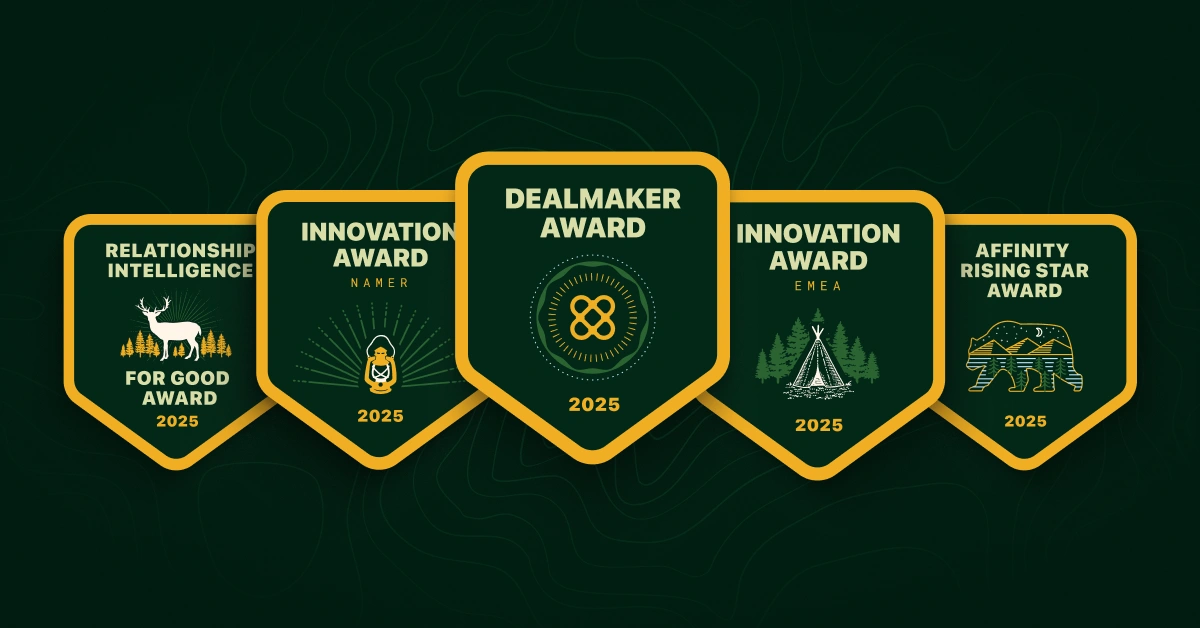This article first appeared in Forbes.
The early 2000s brought a renaissance in relationship management software. The days of using physical contact books and Rolodexes were over. The cloud became the norm, with pioneers like Salesforce, Hubspot, and LinkedIn leading the way. They quickly modernized the way that the business world manages relationships.
Today, there’s a new renaissance happening. Many of the world’s biggest industries are waking up to the limitations of traditional relationship management software and realizing that more can be done with the abundance of data and AI that permeates every aspect of business.
Transactional versus relationship-driven industries
Traditional customer relationship management (CRM) platforms were particularly transformative in industries that are mostly driven by volume. In retail, hospitality, and consumer goods, relationships are more short-term and commoditized. Relationship longevity in the form of customer loyalty is coveted, but it’s still transactional by nature.
Traditional CRMs deliver on the promise of relationship management for these industries incredibly well. Another factor for their success is these industries’ ability to enforce discipline and rigor in manual data entry. In sectors where employees keep enough information up to date, it doesn’t matter if a CRM doesn’t have a way to automatically pull in relationship-based data. The data is accurate enough for leaders to make business decisions.
Things change when it comes to relationship-driven industries like private capital, investment banking, professional services, and finance. In these industries, relationships—of the long-term, unstructured and collaborative variety—are the asset class separating the true winners from everyone else.
Dealmakers in relationship-driven industries have some of the biggest networks in the world. They spend 90% of their lives in meetings or sending emails. Every relationship is important because someone you meet today might unlock or enable the biggest deal of your life—only it might be five or 10 years down the road.
These dealmakers have both the largest, fastest-growing networks where context matters and the least amount of time to maintain data entry. Traditional CRMs fail relationship-driven industries because they were never built to manage these types of relationships.
Meeting the unique needs of relationship-driven industries
When you think about it, the majority of the world’s relationship data doesn’t live inside a static system like a CRM. Instead, the data exists in calendar invites, emails, calls, and text messages—and publicly available data about people and companies.
All that latent data is hugely powerful if you can bring it together to draw insight. With the right relationship-management software in place, dealmakers can put data entry on autopilot so that, despite taking the most meetings and having the largest networks, they can spend their time on value-added activities while the data looks after itself.
This paradigm shift is just what dealmakers need to drive efficiency in their roles. For a VC investing in health tech, it’s incredibly valuable to see (at a glance) insights like a prospective company’s employee growth and whether anyone else at the firm has reached out before. If the company’s a good fit for the firm’s investment thesis, that VC is more likely to land a first meeting if they have relationship data to identify the warmest path of introduction to the founder.
“Warmest” here is important, because it points to the gap left by a platform like LinkedIn where everyone connects with everyone else. It’s impossible to correctly determine relationship strength without layering on communication activity across a firm’s entire network. This is the key differentiator offered by a CRM powered by relationship intelligence, which is a game changer in relationship-driven industries.
Infrastructure for the relationship-driven economy
Today, CRMs power almost every business in the world. There’s a reason why the global CRM market was worth $63.91 billion in 2022—a number that continues to grow rapidly. But it’s not one size fits all. The relationships that CRMs manage for consumer goods are very different to those they manage for venture capital.
For readers in the process of evaluating CRM options, the first thing to realize is that you need something in place. Whether you sell consumer goods, capital to fund startups, investment banking services or something else, you need a form of CRM.
Beyond that, it becomes a case of evaluating the types of relationships your company manages. Are they transactional or longer-term and more oriented to dealmaking? How effectively can you enforce data entry across your team?
For those in transactional industries with strong data practices, a traditional CRM like Salesforce—or even perhaps a modern spreadsheet solution like Airtable or Notion—will function perfectly well. But if you answer the questions above and realize you need more, a CRM that enables relationship intelligence and data automation as a first-order priority is a must.
Because the reality is if you are a dealmaker in a relationship-driven industry, your needs are different from those of a transactional organization. The future is one where platforms designed for relationship-driven industries will replace or augment traditional CRMs. The result will be that anyone who needs to can cultivate and fully harness their network to succeed.
{{report-202303-benchmark="/rt-components"}}







.png)


.webp)
.webp)
